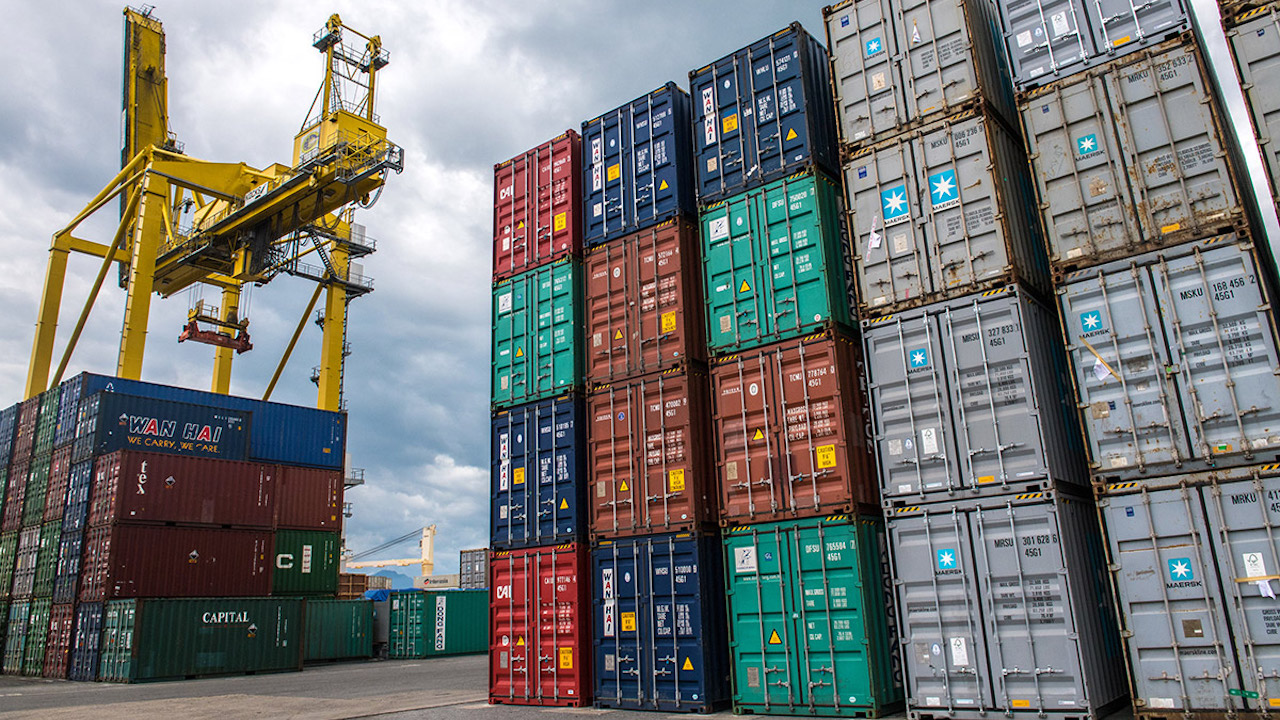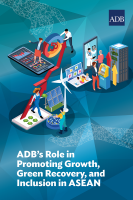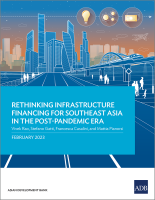
Regional cooperation and integration has played an important role in Asia by promoting peace and stability in the region, intra-regional trade, investment, and the provision of regional public goods. Photo credit: ADB.
Established in 1967 to strengthen security, ASEAN has transformed into an economic cooperation grouping.
Southeast Asian countries’ unified response to the coronavirus disease (COVID-19) pandemic and global financial crises builds a case for regional cooperation and integration programs and illustrates how these could contribute to Asia’s overall growth.
Regional cooperation and integration has played an important role in Asia by “promoting peace and stability in the region, intra-regional trade, investment, and the provision of regional public goods,” said Yasuyuki Sawada, chief economist at the Asian Development Bank (ADB), at a webinar in August.
Asia’s Journey to Prosperity: Policy, Market, and Technology Over 50 Years, a book launched by ADB this year, also noted the important contribution of regional cooperation programs. It cited the Association of Southeast Asian Nations (ASEAN) as a successful example.
Established by five countries in 1967 to strengthen security, the now 10-member ASEAN has transformed into an economic cooperation grouping, as conflicts were eventually settled.
Members then used ASEAN as an avenue to forge trade agreements, credited for liberalizing trade in the region, and for laying the foundation for the ASEAN Economic Community, which created a $2.6-trillion market of 622 million people. It has also collectively promoted sound, market-oriented policies over time, engaging new members.
Crisis management
ASEAN countries also work together to mitigate risks during global crises.
The 1997–1998 Asian financial crisis and the 2008–2009 global financial crisis prompted ASEAN to start regional policy dialogues that led to the setup of mechanisms to mitigate macroeconomic and financial shocks. The 1997–1998 Asian financial crisis, for instance, led to further cooperation on monetary and financial issues, spurring innovative mechanisms and initiatives to strengthen resilience against financial instability, according to the book.
More recently, ASEAN mounted a unified response against COVID-19, with health ministers meeting as early as January 2020 to take stock of the crisis. Another meeting was scheduled on 20 February to talk about follow-up actions.
On 14 April, ASEAN convened a special summit where leaders vowed to mount a coordinated offensive against the pandemic, including agreeing to further strengthen public health cooperation measures to contain the pandemic and to coordinate policies in mitigating economic and social impact, safeguarding people’s well-being, and maintaining socio-economic stability, among others.
Authorities across the region have also used ASEAN as a venue to share information, best practices, and experience in responding to the crisis.
Another potential area of cooperation is in collaborating and supporting external partners in developing a vaccine against COVID-19 through sharing of clinical data and reports.
Regional cooperation programs can also be used as a platform to help countries recover from COVID-19. In an address to ADB’s Board of Governors on 18 September, President Masatsugu Asakawa said ADB will promote regional cooperation and integration to help members seize the opportunity that renewed globalization can offer in a post-pandemic new normal. “While there are some who suggest that recent border closures and travel restrictions are signs that globalization has ground irreversibly to a halt, I do believe that globalization will return, but it will take a different shape.”
ADB will work with developing members to secure more diversified value and supply chains, and to promote regional public goods for better collective prevention of disease outbreaks, mitigation of climate change impacts, and enhancement of the regional financial safety net.
Other regional programs
Two subregional initiatives constitute important building blocks for ASEAN. These are the Indo-nesia–Malaysia–Thailand Growth Triangle (IMT–GT) and the Brunei Darussalam–Indonesia–Malaysia–Philippines East ASEAN Growth Area (BIMP–EAGA).
There are also other cooperation programs in Asia, which developed “at different speeds,” the book said. It noted that those outside East Asia and Southeast Asia faced challenges from their political and economic environments. In South Asia—which for a long time struggled to secure stability, peace, and security in the subregion—regional cooperation progress was hampered by geopolitical tensions.
Still, the book said the regional cooperation frameworks countries in the Asia and the Pacific have adopted over the years to promote trade, investment, infrastructure connectivity, and regional public goods “contributed to the pursuit of good policies and a sense of cooperation between countries.”
Future contributions
The book said regional cooperation and integration programs have the potential to further deepen and contribute to the welfare of the region and the world at large. It pressed regional groupings to do the following:
- Push for further trade and investment liberalization through subregional initiatives and multilateral agreements. Asia’s subregions should continue to work toward implementing global agreements, like the World Trade Organization (WTO) Trade Facilitation Agreement, which came into force in February 2017. The deal contains provisions to further ease the movement, release and clearance of goods, including goods in transit.
- Promote “megaregional” free trade agreements that can act as building blocks for the multilateral trading system. These megaregional trade agreements can promote liberalization consistent with WTO principles and simplify complexities from the proliferation of bilateral and regional trade deals by rationalizing rules of origin.
- Promote better connectivity, as there is a need to complement hard infrastructure with “soft” connectivity institutions to more efficiently use cross-border connectivity, including digital communications.
- Push for greater cooperation in the conservation and management of shared natural re-sources such as rivers, oceans, and forests with large biodiversity.
- Promote greater cooperation in agriculture, including policies, research on seed varieties, and land and water use. With the increased cross-border flow of agricultural products, cooperation should be strengthened in veterinary services to reduce the spread of contagious disease among animals, and in coordination of food quality and quarantine standards.
- Focus more on people. Subregional initiatives can share country experiences on policies covering technical and vocational education and training, universal health coverage, and social protection, among others. Along with easing people’s mobility across borders for work and tourism, enhanced cooperation on the prevention of contagious diseases, including HIV/AIDS, is also needed.
- Amplify Asia’s voice on global affairs. As the economies of Asia and the Pacific and its populations continue to grow, the region becomes more important in addressing global issues, whether on the environment and climate change, population aging, or trade issues.
This article was first published by BIMP-EAGA on 29 September 2020.

BIMP-EAGA
The Brunei Darussalam–Indonesia–Malaysia–Philippines East ASEAN Growth Area, or BIMP-EAGA, is a cooperation initiative established in 1994 to spur development in remote and less developed areas in the four participating Southeast Asian countries.


